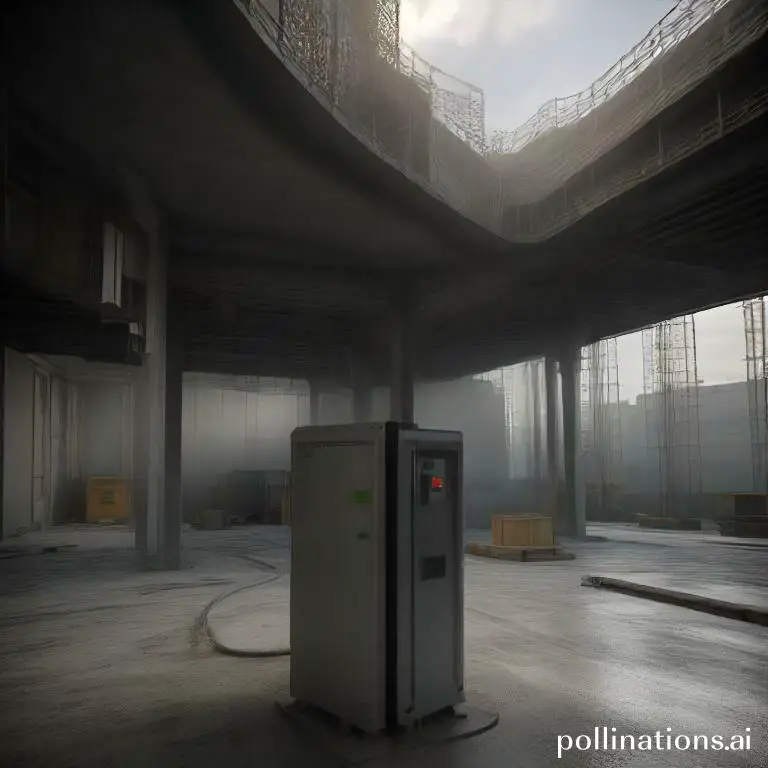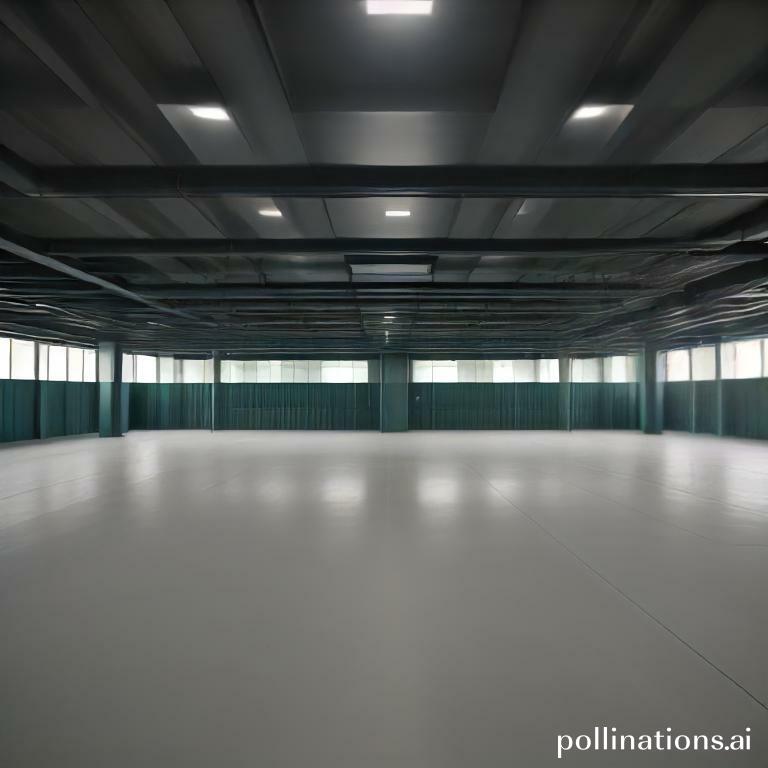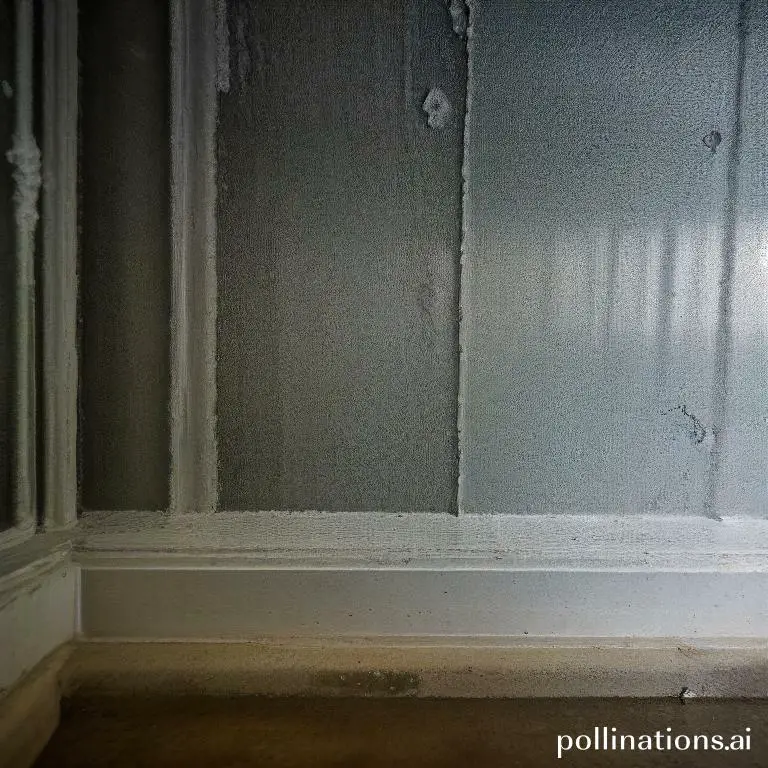
Check Out The Exclusive Deals Waiting For You! ∇
No products found.
Perceiving Humidity and its Impact on Construction
1. What is Humidity and How Does it Affect Construction?
Humidity refers to the amount of moisture present in the air. In construction, humidity can have a significant impact on various aspects of a project. High humidity levels can affect the drying time of construction materials such as concrete, paint, and adhesives. It can also lead to condensation, which can cause mold and mildew growth. Additionally, humidity can affect the stability and durability of materials, leading to structural issues over time.
2. The Relationship between Humidity and Moisture in Construction Materials
Humidity and moisture go hand in hand in regard to construction materials. High humidity levels can increase the moisture content in materials, which can lead to warping, swelling, and decay. For example, wood is particularly susceptible to changes in humidity. When exposed to high humidity, wood can absorb moisture, causing it to expand and potentially compromise the integrity of the structure. Therefore, it is crucial to consider humidity levels during the selection, storage, and installation of construction materials.
3. Common Issues Caused by High Humidity in Construction
High humidity in construction can result in several common issues. One of the main concerns is mold and mildew growth. These can not only damage the aesthetics of a building but also pose health risks to occupants. High humidity can also lead to paint blistering or peeling, as well as the deterioration of adhesives and sealants. In addition, excessive moisture can cause corrosion in metal components, compromising their strength and lifespan. It is essential to monitor and control humidity levels to mitigate these potential problems.
| Humidity Issues | Impact on Construction |
|---|---|
| Mold and Mildew Growth | Can damage structures and pose health risks. |
| Paint Blistering and Peeling | Affects the appearance and longevity of painted surfaces. |
| Deterioration of Adhesives and Sealants | Compromises the integrity of joints and seals. |
| Corrosion in Metal Components | Reduces strength and lifespan of metal structures. |
HVAC Systems for Humidity Control in Construction
In the realm of construction, humidity control is a crucial aspect that directly impacts the quality and durability of the structure being built. HVAC systems play a vital role in maintaining optimal humidity levels throughout the construction process, ensuring a conducive environment for various construction materials.
The Role of HVAC Systems in Humidity Control during Construction
During construction, HVAC systems are responsible for regulating the moisture content in the air, preventing excessive humidity that can lead to issues such as mold growth, material warping, and compromised structural integrity. By efficiently controlling humidity levels, HVAC systems create a stable environment that promotes the proper curing of concrete, drying of paint, and installation of flooring materials.
Types of HVAC Systems Suitable for Construction Sites
Several types of HVAC systems are suitable for construction sites, depending on factors such as the size of the project, location, and specific requirements. Portable dehumidifiers are commonly used for smaller construction sites or localized humidity control needs. They are compact, easy to move around, and provide effective moisture removal. For larger construction projects, central HVAC systems equipped with advanced humidity control features are preferred. These systems offer precise temperature and humidity regulation throughout the entire construction site.
Proper Sizing and Installation of HVAC Systems for Effective Humidity Control
Proper sizing and installation of HVAC systems are critical for achieving effective humidity control during construction. HVAC professionals carefully assess the size of the construction site, considering factors such as the volume of the space, number of workers, and anticipated moisture sources. By accurately sizing the HVAC system, it can adequately handle the moisture load and maintain optimal humidity levels. Additionally, proper installation ensures seamless operation and minimizes the risk of air leaks that can compromise humidity control.
| Benefits of HVAC Systems for Humidity Control in Construction: |
|---|
| – Prevention of mold growth and material warping |
| – Facilitation of proper curing of concrete |
| – Ensuring optimal conditions for paint drying and flooring installation |
| – Versatility of portable dehumidifiers for smaller construction sites |
| – Precise temperature and humidity regulation with central HVAC systems |
| – Proper sizing and installation for efficient moisture removal |
Best Practices for Humidity Control during Construction
In the construction industry, humidity control is a crucial aspect that should not be overlooked. High humidity levels can lead to various issues, including mold growth, material degradation, and delays in construction timelines. To ensure a successful construction project, it is essential to implement effective strategies for monitoring and controlling humidity levels. This section will discuss the best practices for humidity control during construction, including monitoring and measuring humidity levels, implementing moisture barrier systems and vapor retarders, and controlling humidity through ventilation and air circulation.
1. Monitoring and Measuring Humidity Levels on Construction Sites
Accurate monitoring and measurement of humidity levels are the first steps in effective humidity control during construction. By regularly monitoring humidity levels, construction professionals can identify potential issues early on and take necessary measures to prevent further problems. Utilizing advanced humidity sensors and data loggers, construction teams can track humidity variations and make informed decisions regarding moisture control.
2. Implementing Moisture Barrier Systems and Vapor Retarders
Moisture barrier systems and vapor retarders play a crucial role in preventing moisture intrusion and protecting construction materials from damage. These protective measures are particularly important in areas prone to high humidity or moisture, such as basements or areas near water sources. By installing moisture barrier systems and vapor retarders, construction projects can maintain optimal humidity levels and prevent moisture-related issues.
3. Controlling Humidity through Ventilation and Air Circulation
Proper ventilation and air circulation are key elements in humidity control during construction. By ensuring adequate airflow and ventilation, construction sites can reduce humidity levels and prevent the accumulation of moisture. This can be achieved through the use of fans, dehumidifiers, and strategic placement of air vents. Additionally, implementing proper insulation techniques can help regulate temperature and humidity levels within the construction site.

Preventing Mold and Mildew Growth in Construction
The Dangers of Mold and Mildew in Construction Projects
Mold and mildew can pose significant risks to construction projects. These fungi thrive in moist environments, and when left unchecked, they can compromise the structural integrity of buildings. Mold and mildew not only damage materials but also contribute to poor indoor air quality, leading to potential health issues for occupants. It is crucial to address mold and mildew growth promptly to ensure the safety and longevity of construction projects.
Proper Moisture Management to Prevent Mold and Mildew
Effective moisture management is key to preventing mold and mildew growth in construction. By controlling and reducing moisture levels, contractors can create an environment that is inhospitable to these fungi. This can be achieved through various techniques, such as proper ventilation, waterproofing, and insulation. Implementing these measures from the early stages of construction can significantly reduce the risk of mold and mildew proliferation.
Mold Remediation and Prevention Techniques for Construction Sites
In cases where mold and mildew have already taken hold, it is essential to employ mold remediation techniques to eliminate their presence. This involves thorough inspection, identification of the affected areas, and the use of appropriate cleaning agents and equipment. Additionally, preventive measures should be implemented to minimize the chances of future mold and mildew growth. These may include regular inspections, moisture monitoring, and the use of mold-resistant building materials.
| Mold and Mildew Prevention Tips: |
|---|
| – Ensure proper ventilation throughout the construction process. |
| – Seal all potential sources of moisture, such as pipes and windows. |
| – Use mold-resistant building materials whenever possible. |
| – Regularly inspect and maintain the construction site for any signs of moisture. |
| – Address any water leaks or spills immediately. |

Importance of Humidity Control for Worker Safety and Comfort
Humidity control plays a vital role in ensuring the safety and comfort of workers in various environments. Comprehending the impact of humidity and implementing effective control measures can significantly amplify worker well-being and productivity.
1. Ensuring Worker Safety in High Humidity Environments
In high humidity environments, such as factories or construction sites, excessive moisture in the air can pose several safety risks. It can lead to slippery surfaces, increasing the chances of accidents and falls. Additionally, high humidity can impair visibility and hinder the proper functioning of equipment, further compromising worker safety. Implementing humidity control measures, such as dehumidifiers or ventilation systems, can help maintain optimal humidity levels, reducing the risk of accidents and creating a safer working environment.
2. The Impact of Humidity on Worker Productivity and Efficiency
Humidity levels can significantly affect worker productivity and efficiency. High humidity can cause discomfort, making it difficult for workers to focus on their tasks. It can lead to fatigue, reduced concentration, and decreased cognitive abilities. In contradistinction, low humidity levels can cause dryness and irritation, affecting respiratory health and overall well-being. By controlling humidity levels within the recommended range, employers can create a conducive working environment that promotes productivity and enhances overall efficiency.
3. Creating a Comfortable Working Environment through Humidity Control
A comfortable working environment is essential for employee satisfaction and well-being. Proper humidity control helps regulate temperature and moisture levels, ensuring a pleasant atmosphere for workers. Maintaining optimal humidity can prevent issues such as dry skin, respiratory discomfort, and static electricity, which can cause distractions and reduce overall comfort. By investing in humidity control systems, employers demonstrate their commitment to providing a comfortable workplace, leading to increased employee satisfaction and potentially higher retention rates.
Conclusion
Humidity control during construction is crucial to ensure the longevity and durability of your home. Excessive moisture can lead to mold growth, wood rot, and other structural issues. Proper ventilation, dehumidification, and insulation are key to maintaining a healthy indoor environment. It’s important to monitor humidity levels regularly and take necessary steps to prevent moisture buildup. With the right tools and techniques, you can protect your investment and enjoy a comfortable, safe living space for years to come.
Remember, prevention is always better than cure in regard to humidity control. By taking proactive measures and staying vigilant, you can avoid costly repairs and health hazards down the line. Whether you’re building a new home or renovating an existing one, make sure to prioritize humidity control as an essential part of your construction process.
Read Also:
1. Humidity control in historic buildings
2. Importance of HVAC in humidity control
